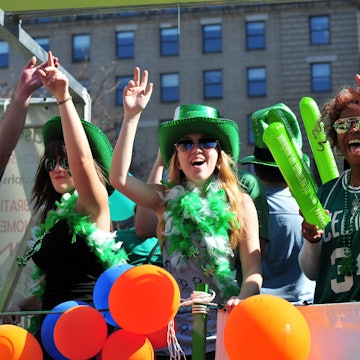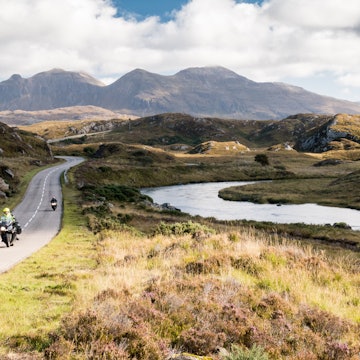

Brighton is arguably Britain’s premier seaside town but hotspots like the North Laines and the iconic Brighton beach frequently turn into scenes of interminable gridlock as visitors flock in. Here are a few places to escape the crowds and see a different side to the city by the sea.

Dog and Bone Gallery
Two bright red London phone boxes stand rather innocuously side by side on the southwest corner of Powis Sq in the Seven Dials neighbourhood. You’d be forgiven for not giving them a second glance as you walk through this pretty regency square. A closer look inside, however, reveals Brighton’s smallest gallery space. Featuring a new artist each month, the Dog and Bone Gallery will display everything from sketches to paintings to photographs. Set up by local artist Sam Toft, they’re a quirky tribute to the creativity of the city.
Old Police Cells Museum
Housed in the basement of Brighton Town Hall, The Old Police Cells Museum charts the sort of history you don’t find in most contemporary museums. Covering Brighton’s criminal past over the course of almost two centuries, this is a fascinating glimpse into the murky world of law and order in the city. Peek into the grim cells while learning about the murder of the Chief Constable Henry Solomon in 1844 by a prisoner. Over 100 years later the mods and rockers were briefly incarcerated here and their graffiti is still visible on the walls.

Madeira Lift
Brighton isn’t short of kooky Victorian items, but Kemptown’s Madeira Lift is one of the quirkier antiques from the seaside holiday heyday of the 19th century. Built in 1890 to transport visitors down from Marine Parade to Madeira Drive, it still runs and is free for the public to use.
Following a much-needed renovation in 2013, the lift now offers a very different destination to the one our Victorian ancestors would have experienced: it descends the cliff and drops its riders directly into a nightclub.
Victorian Clock Tower time ball
There’s nothing remarkable about the old Victorian Clock Tower on North Street at first glance. Look closely, however, above the clock faces and you’ll spot a gilded copper sphere known as a time ball – a hydraulically-operated time-signalling device that rises and falls as each hour approaches.
Designed by local inventor Magnus Volk, this relic of a bygone era is one of the few operating time balls in existence. It had to be disabled due to complaints about the noise it made not long after opening in 1888, but following refurbishment in 2002 (and silencing) it’s fully operational once again.

Brighton's nudist beach
Given Brighton’s famously liberal attitude, it’s hard to imagine that there was any opposition to the idea of a nudist beach when it was first suggested 40 years ago. Despite the protests by some concerned residents and local councillors, Brighton made history by becoming the first public naturist beach in the UK in 1979.
Located around halfway between Brighton Pier and Brighton Marina, it’s comfortably away from the crowds while the large banks of pebbles help to provide a degree of screening for anyone who’s wary of disrobing in public for the first time.
Preston Manor pet cemetery
Preston Manor, a grand manor house adjacent to Preston Park, was the home of Brighton's Edwardian gentry. While the house is rumoured to be the scene of ghostly phenomena, it’s not only the interior that has a macabre side to it.
Just behind the estate lies an 18th-century walled garden containing miniature gravestones of four cats and 16 dogs in its southwest corner. Animal lovers be warned – some of the names on the headstones are very cute.

Booth Museum of Natural History
Hidden away in a quiet neighbourhood towards Hove, the Booth Museum of Natural History was the brainchild of the eccentric naturalist Edward Thomas Booth. Founded in 1874, it was originally a home for Booth’s vast collection of stuffed birds displayed as a diorama of their natural habitat.
It has since expanded and the collection now features over half a million natural specimens including insects, butterflies, fossils, animal skeletons and dinosaur bones. Entry is free.

The Chattri
Unveiled by the Prince of Wales in 1921, the Chattri is a white marble war memorial dedicated to the Indian soldiers who gave their lives for the British Empire during WWI, many of whom were treated in makeshift military hospitals in Brighton.
The Chattri (meaning ‘umbrella’ in Hindi, Punjabi and Urdu) is now Grade II listed, underlining its importance as a historical site. Located on a hill just north of the suburb of Patcham, it’s a serene and poignant escape from the city, offering sweeping vistas of the South Downs.
You might also like:
Go off-the-grid with these English seaside huts
Seaside snaps: how to take brilliant beach photographs
Whitby – how a Yorkshire seaside town became the UK’s gothic capital
















